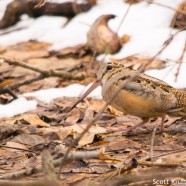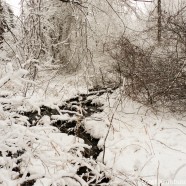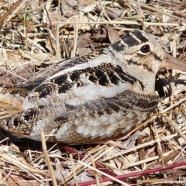American Woodcock in March Snow
I was delighted to find this American Woodcock (Scolopax minor) feeding in the exposed leaf litter and mud thanks to the warm, flowing spring and expansive wetlands in my yard today after about six more inches of snow fell yesterday and early this morning. Note the muddy end of this shorebird’s bill showing it had been busy foraging throughout the day in this video… …and the photos below: This well-known spring species dances on the ground while foraging and in the sky while courting every March, though this year the displays may be a little later than usual. The sun is so...
Read MoreSnowy Wetlands
If you can manage to discover any open wetlands in January where water still flows you may be in a store for a treat when it comes to some of the hidden birds in and around this habitat. Natural springs may run even when the temperature is well below freezing. Some streams find a way to keep warm and draw in wildlife, too. The tiny Winter Wren can be found in a place like this, hopping from rock to rock. One may turn up a very well hidden American Woodcock using the exposed earth to search for earthworms. Ruby-crowned Kinglets may be feeding at eye-level as they hope for insects in the air...
Read MoreThe unique American Woodcock
American Woodcocks (Scolopax minor) are so very unique. They are shorebirds that live in the forest, foraging in the leaf litter, or old fields. They take flight in astoundingly graceful courtship displays each year around this date on the calendar when the evenings begin to warm up. As you can see in both this photo and the subsequent videos they have tremendously evolved features such as that enormous eye that seems like it can spot you at 360 degrees at all times and a body pattern that makes them almost invisible to our eyes, even up close. You may have already seen this video we posted...
Read More






